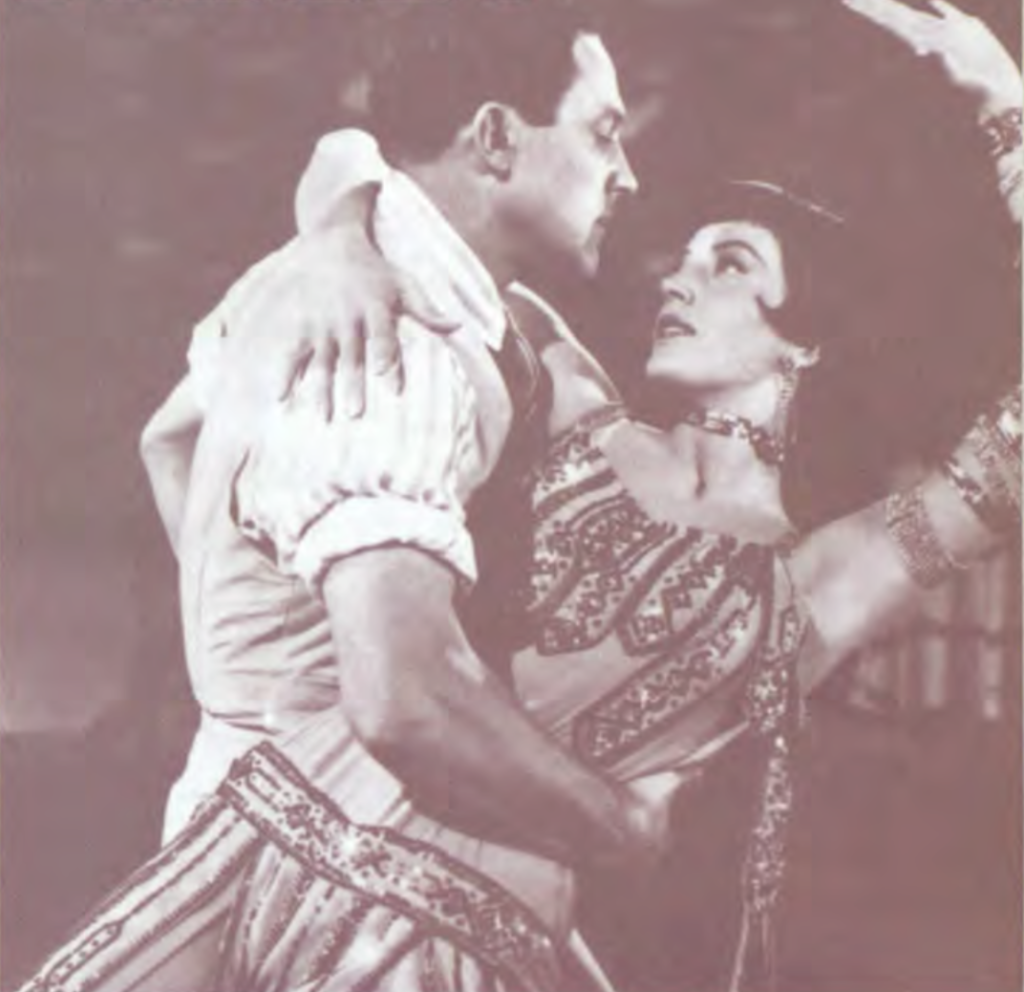Gene Kelly got his first big break on Broadway in the Rodgers and Hart musical Pal Joey. He had graduated from the University of Pittsburgh and was operating his successful dance schools in Pittsburgh and in Johnstown, Pennsylvania when he decided to try his luck in New York. Within a short time he landed the part of Harry the Hoofer in William Saroyan’s hit The Time of Your Life where composer Richard Rodgers spotted him and asked him to audition for ‘Pal Joey.’
From there he went west and began his legendary Hollywood career making a total of 33 motion pictures, taking as his dance partners such stars as Judy Garland, Rita Hayworth and many others.
Kelly, who was proud of his Irish roots, held dual citizenship. Since his grandfather was born in Ireland, he was able to obtain an Irish passport.
What was the difference between you and Fred Astaire?
Well, if you look at his pictures and mine, you will see that he was always sleek and rich with a top hat, white tie and tails, and I was more the common man in the street with a tee-shirt. And that difference was reflected in the dances. And certainly in my political ideology, I was always a liberal Democrat, and I felt for the masses and I didn’t want the dancing I did to be any kind of high- class looking. And I say this, of course, with no sense at all of derogation. I just wanted my style to look athletic and reflect the com- mon man. Whereas most dancers who had come before me, like Astaire, reflected the dancing of the rich.
Could you tell us about Judy Garland?
Judy was a miraculous entertainer and she could learn scripts just by reading them through once. I deem myself lucky to have done my very first picture with her, For Me and My Girl.
We loved each other. I was married at the time and we had no so-called love affair; she was a deep friend of my wife and me and we were very close to her. I dearly loved her as a friend.
What about directing?
I actually love to create the dance more than I love to dance it. So naturally, I got into directing. That was my greatest joy. Once I created a dance number, I didn’t care about performing it as much as I did when I was creating it. So the directing was always more of a pleasant task to me than the actu- al performing.
There were so many Irish in this field.Yes, you’re right about the Irish dancers. That’s a phenomenon of the time. The Irish really dominated popular dance in twentieth century America, no doubt about it. I think it came from the fact that the dancing in Ireland for centuries has been clog dancing and reels and these dances certainly influenced the American people in the late nineteenth and twentieth centuries so that it actually became part of American tap dancing.
How Irish are you?
My full name is Eugene Curran Kelly. Curran was my mother’s family. Her father came from Country Clare. And so I’m Irish on both sides.
At what point did you decide to become a professional dancer?
My father was out of work, so for purely economical reasons, my whole family started to give little dance lessons. My mother started a dancing school with us and it grew and grew. And finally as I learned more and more from teachers, mainly in Chicago where I went to study every summer, I found that I was really interested in doing dancing as my living. So I stayed with it. And it wasn’t until I left college that I made the final decision, because up until then, dancing was just a way to put myself through university.
Dancing and choreography has been so much a part of your life and your passion. Do you miss it?
I retired from dancing quite a few years ago. You can’t dance well enough when you’re old, and when I danced, I wanted to dance well enough.
So I just said, “That’s it. I quit.”
Gene Kelly passed away in 1996.


Leave a Reply